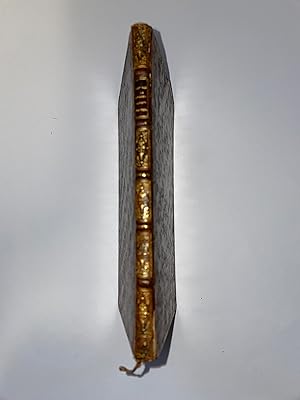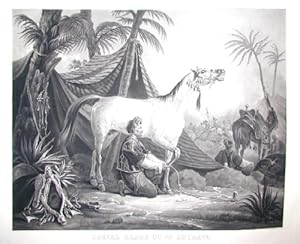nature (Plus de 6 100 résultats)
Type d'article
- Tous les types d'articles
- Livres (5 627)
- Magazines & Périodiques (12)
- Bandes dessinées
- Partitions de musique (1)
- Art, Affiches et Gravures (286)
- Photographies (16)
- Cartes (27)
-
Manuscrits &
Papiers anciens (172)
Etat
Reliure
Particularités
- Edition originale (2 474)
- Signé (728)
- Jaquette (304)
- Avec images (4 469)
- Sans impression à la demande (6 101)
Livraison gratuite
Pays
Evaluation du vendeur
-
Metamorphosis Insectorum Surinamensium, Plate No. 26; Cocoa plant, caterpillar, pupa, and butterflies
Edité par The Netherlands, 1705
Vendeur : Rob Zanger Rare Books LLC, Middletown, NY, Etats-Unis
Engraving with hand coloring in watercolor on watermarked Honig cream laid paper. 12 7/8 x 95/8 inches (327 x 245 mm), sheet 20 5/8 x 14 inches (522 x 354), full margins. Minor handling wear, and scattered light spots of minor discoloration throughout. Colors remain extremely vibrant. From the edition engraved by Pieter Sluyter, printed early between 1719 and 1730. Translation of the original text regarding Plate No. 26: "This plate shows a branch of a Cacau boom [cocoa tree], of which the leaves are hard, stiff and grass-green. The trees grow as tall as an apple tree and bear simultaneously blossom, ripe and unripe fruits. The blossom is reddish and sprouts from either side of the wood. The young fruits are reddish-green. When they are ripe they are yellow like lemons. They have thick peels, which are used as fertilizer and as manure for the land. The beans or seeds are dried and hardened in the shade before, they are sent to other countries. These trees grow very well in Suriname although they are difficult to cultivate, because they must always shelter under another tree, which protects them from the heat of the sun, since they cannot stand the great heat. That is why they are planted next to a banana or Bakoven when they are still young, in order to shield them from the heat. On these cocoa trees I found large numbers of black caterpillars with red stripes, like the one shown on the green leaves, feeding on the foliage. They have red stripes with white spots. They are very slow and sluggish by nature. On 26 March I saw them turn into pupae, from which white moths emerged on 10 April, adorned with black stripes and spots." Notes on the watermark: "Watermarks representing the arms of Strasbourg, a bend on a â ¢shield surmounted by a large fleur-de-lys, are characteristic of 'Royal Paper'; paper of the largest standard size and always of high quality. In various forms, the 'Strasbourg Lily' occurs in Angoumois, Dutch and English papers in the later seventeenth and eighteenth centuries. The `WR' monogram at the bottom of the mark probably originated as the personal sign of Wendelin Riehel, a printer who rented a paper mill in Strasbourg during the sixteenth century; it was later widely used as a neat but meaningless termination to the pendant centre-line of many heraldic watermarks." [Viola a da Gamba Society, Appendix I: Watermarks and Paper Types, 268-272] The design of the Strasbourg Lily was used by the Honig papermakers between 1741 and 1822. The lettering "C & I HONIG" occurs between 1730 and 1869. It is known that the brothers Cornelis Jacobszoon and Jan Jacobszoon Honig worked together under the name "C & I Honig" but started new companies, each one for himself, in 1738. Cornelis (1683-1755) continued under the name "C & I Honig," now together with his son Jacob Cornelisz Honig (1707-1770). [Klepikov, S. A., Some information over the "Honig" watermarks, IPH Information. Bulletin of the International Association of Paper Historians (IPH), N.S., vol. 6, no. 1 (January 1972), 10-13.] Maria Sibylla Merian was one of the most highly respected entomologists of the 17th century, and remains today one of the field's most significant figures. A German-born naturalist and scientific illustrator, she reared herself on the study of caterpillars, and made tremendous contributions to the knowledge of the life cycles of numerous species. Until her detailed and careful study of the process of metamorphosis it was commonly believed that insects were "born of mud," through spontaneous generation. Trained as a miniature painter by her stepfather, she published her first book of illustrations in 1675, at the age of 28. In 1679, Merian published the first volume of the two-volume series on caterpillars, The Wondrous Transformation of Caterpillars and their Strange Diet of Flowers; the second volume followed in 1683. Each volume contained 50 plates that she engraved and etched. In 1699, Merian traveled to Dutch Guiana with her daughter to study and record the tropical insects native to South America. The result was her 1705 magnum opus, Metamorphosis Insectorum Surinamensium. Merian's Metamorphosis has been credited with heavily influencing the way naturalists presented their illustrations to include a life form in various stages of development. Years after her death, Merian has been honored by having a number of taxa and three genera named after her. According to Jennifer Pomeroy's 2018 biography, three butterflies have been named after Merian; in 1905 a form of a split-banded owlet butterfly Opsiphanes cassina merianae; in 1967 a subspecies of the common postman butterfly Heliconius melpomene meriana; and in 2018 a rare butterfly Catasticta sibyllae from Panamá. In addition, the Cuban sphinx moth has been named Erinnyis merianae, a Tessaratomidae bug has been named Plisthenes merianae, a genus of mantises has been named Sibylla, the orchid bee Eulaema meriana, and the bird-eating spider Avicularia merianae was named in her honor, referencing her research on spiders. The spider Metellina merianae was named after her in 2017. An Argentine tegu lizard has been named Salvator merianae. A toad was named Rhinella merianae. A snail was named Coquandiella meriana. The Madagascan population of the African stonechat bird was given the name Saxicola torquatus sibilla. A genus of flowering plants was named Meriania, and an iris-like plant was given the name Watsonia meriana. [Sarah B. Pomeroy; Jeyaraney Kathirithamby (2018). Maria Sibylla Merian: Artist, Scientist, Adventurer. Getty Publications.].
-
Discorso intorno a dimonii, volgarmente chiamati spiriti.
Edité par Florence, Bartolomeo Sermartelli, 1576
Vendeur : Sokol Books Ltd. ABA ILAB, London, Royaume-Uni
Livre Edition originale
Hardcover. Etat : Good. 1st Edition. FIRST and ONLY EDITION. 8vo, (xvi), 108, (iv). Roman and Italic letter, printed side notes. Printer s woodcut device on title page, floriated and historiated initials, typographical head- and tailpieces. Intermittent light age yellowing and foxing, p. 25, side note shaved. A good copy in later vellum over boards, all edges blue. First edition of this work on demons, familiar spirits, necromancers and other aspects of the occult by Francesco Vieri the Younger, called Verino (1524-1591). Born of a noble family, Verino taught at the University of Pisa, first holding a chair in Logic and later in Philosophy. He was a representative of Neoplatonism, who aimed at reconciling Paganism with Catholic theology, and a follower of Giovanni Pico della Mirandola. Most of his works were vernacular and include meditations on Plato s theology, Aristotelian meteorology and lectures on ethics, love and literature. The Discorso was inspired by an event in the Benedictine monastery of Sant Anna in Pisa. In 1574 some nuns showed typical signs of demonic possession (speaking Latin, revealing secrets and mysteries of faith). Verino was asked to study their affliction and the effectiveness of the rites of exorcism applied. The work was composed for the Archbishop of Pisa, Jacopo Borbone, and received the approval of the local Inquisition. Preliminaries are the dedication to the Venetian aristocrat Bianca Cappello, an address from the printer and a list of sources, including the Fathers of the Church, Dante, Pythagoras, Hermes Trismegistus and the Platonic philosophers, such as Pico and Marsilio Ficino. Part 1 contains an introduction and provides an exhaustive explanation of the concept of demon , merging Aristotelian, Platonic and Catholic arguments. Verino lists three meanings: the demon mentioned by Socrates, or the inner voice that guides men; the soul independent of the body and judged by God, and the spirit as a rational and immaterial substance, good or nasty, known as angel . Verino states that the Platonic philosophers believe in the existence of the spirits, while the Aristotelian do not, as shown in the De anima (II). Part 2 mainly deals with the Platonic approach to this topic, according to which spirits have a mixed nature, half human and half divine. Part 3 describes the origin (original sin and divine punishment), nature and powers of spirits, according to the Bible, Augustin and Saint Jerome. A section particularly is dedicated to exorcism and the examination of the symptoms of possession (violence, plurilingualism and knowledge of events in the Bible). Part 4 focuses on reasons for and modes of possession. Verino maintains that spirits are jealous of men s happiness and want to make them suffer, as well as to demonstrate their power against God s will. They can hide in material objects and especially torment vulnerable individuals, such as virgins, pregnant women and sleep-walkers. They also are responsible for diabolic spells on human bodies, and inspire and help necromancers and witches. BM STC It. 725; Gamba, 1737; Kristeller, Iter Italicum, 215:2092. Not in Adams. Not in Brunet or Graesse. Not in Caillet.
-
Militiae Equitis Aurati [I]n Artem Brevem Raymundi Lullii, Commentaria
Edité par Solingen, Joannes Soter, 1538
Vendeur : Sokol Books Ltd. ABA ILAB, London, Royaume-Uni
Livre
Hardcover. Etat : Very Good. 2nd Edition. 8vo. pp [284] a-r8 s6. Roman letter, occasional Italic. Woodcut initials, t.p. with printer s device of cherub within wreath, 8 woodcut diagrams of Lullian circles. Contemp. ex libris Antonius Dachselhof of Berne to fly. Very minor damp stain and spot to t.p, woodcut circle on b5 just shaved at outer margin. A very good, clean and well-margined copy in contemporary limp vellum with 14 original blank unnumbered ll in front and 31 at end, contemp ink title to upper cover and spine, original kid ties. Second edition of Agrippa s (1486 1535) commentary on Raymond Lull s (1232-1316) Ars Magna or Ultimate General Art , a system of logic blending influences from Arabic mysticism, Egyptian hermeticism, and Lull s missions to Jews and Muslims. In his preface Agrippa praises Lull s art as easy to learn for students young and old : in fact it is based on a confusing series of paper machines Lull had developed to do his reasoning for him, comprising of circles with symbols representing key topics. When rotated together in any combination they yield only theologically true statements, such as Angels are Wise , and God is Eternal . These so-called Lullian Circles were intended as tools for debating faith with Muslims: ironically they were based from an Arabic astrological tool used to cast horoscopes known as the zairja. Agrippa breaks down each circle and its function: there are nine main subjects including God, Angels, and Man, each assigned a letter B-K. The same letters are assigned to characteristics: Goodness, Greatness, Duration, Power, Wisdom, Will, Virtue, Truth, and Glory. The relationship between these sets of terms is determined by three triangles that highlight their differences, similarities, and magnitudes of importance to one another. There is a detailed discussion of the meaning of each circle s constituent terms, including how it is possible to reduce all of philosophy to so few qualities from so many. The work concludes with the rules for using the Lullian Circle, and lists of all possible letter combinations that consider the meanings of some combinations, essentially meditating on the nature of goodness. The work ends with a final breakdown of Lull s terms into tables showing how each relate to the other. An ambitious and strange book irrespective of Agrippa s success in actually explaining Lull s system: Jonathan Swift thought it ridiculous enough to feature in Gulliver s Travels, but Borges credits him as the inventor of the thinking machine : what information scientists call the earliest type of computer. Rare. The only other copy traceable at auction is the Broxbourne copy, Sotheby s 1978. BM STC Gr. p. 11. Index Aureliensis I 101.866. Palau I 3333. Caillet II 6864 Edition originale .
-
Traite des danses, Auquel est amplement resolue la question, asçauoir s il est permis aux Chrestiens de danser.
Edité par Geneva, nn, 1582
Vendeur : Sokol Books Ltd. ABA ILAB, London, Royaume-Uni
Livre
Hardcover. Etat : Fine. 3rd Edition. 8vo. pp. 97 (iii). A-F8, []2. Roman letter, some Italic, small woodcut printers device on title, repeated onverso, floriated woodcut initials and headpieces, autograph Buon on title repeated twice on last leaves, engraved armorial bookplate of Grace Whitney Hoff on pastedown, and of Charles de Labouchère on fly. Light age yellowing, some minor spotting in places, upper outer corner of title page torn and restored with one letter replaced in manuscript. A fine copy in excellent red morocco c. 1700, covers bordered with gilt rule and wide dentelle border, spine with raised bands, gilt in compartments with large fleurons, green morocco label gilt, edges and inner dentelles gilt, a.e.g. six pale blue blank ll. at end. Third and last edition of this important and interesting treatise on dancing by the renowned Protestant theologian Lambert Daneau, first published in Geneva in 1579, giving tremendous insight into attitudes to the the forms and nature of dancing in the C16th. The author refutes all arguments in favour of dancing which he associates with the work of Satan. It commences with three sonnets condemning dancing and a dedication to the protestant King of Navarre, later Henry IV. Daneau was a close follower of Calvin in his attitude to dancing. Nor did the campaign to suppress dancing end with Calvin, for in 1579, fifteen years after his death, we find a lengthy treatise on the subject published in Geneva by Lambert Daneau. The book was offered, in the name of the Ministers of the Reformed Church to the King of Navarre. The preface describes the moral disorder which, partly as the result of the religious wars, reigns in the protestant communities of the day; amongst the evils most rampant are gambling and dancing. The latter, in particular, the author declares, has been much defended by its supporters who, instead of accepting the recommendations of their ministers, persist in putting forward all kinds of arguments in its favour. It is clearly hoped that the Traité des Danses will be accepted as a final convincing refutation of these protestations, for nous condamnons les danses, & desirons de les bannir entierement du milieu de nous We are accordingly treated to a very full exposition of the Calvinist attitude towards dancing and, to a lesser extent, of the arguments traditionally advanced in its defence. In the first place, Daneau specifies that the dances he is attacking are not the sincerely religious dances mentioned in the Bible, but the kind currently practised . .What particularly offends and disturbs the Calvinists in contemporary dancing is the fact that it is mixed . Such dancing, asserts Daneau, is wholely the invention of the Devil who, under the cloak of pleasurable entertainment, kindles the lecherous desires of men and women. Light and salacious conversation is pernicious enough; but when the bodies come into such close contact, it is but a small step to the final perdition of the soul. Every dance offers opportunities for caresses and increases the dancers lustfulness. The gay atmosphere helps to foster this abandonment of all restraint, and not only the dancers, but also the onlookers, are in spiritual danger. In addition, all kinds of instruments, designed for a nobler purpose, are used to present the devilish poison the more temptingly. Nor is that all; for the dances are as a rule accompanied by lewd songs. H. P. Clive. The Calvinists and the question of dancing in the C16th century. A beautifully bound copy very much in the style of dentelle bindings done in the atelier de Luc-Antoine Boyet, though the tools used here do not exactly match the tools tools used in his atelier. From the library of the American, bibliophile, philanthropist and feminist Grace Whitney Hoff. The contemporary autograph could perhaps be that of the French printer Gabriel Buon. USTC 10115. Barbier IV p. 776. Not in Gay or Erdmann. .
-
Nuova minera d'oro.
Edité par Venice, B. Barezzi, 1590
Vendeur : Sokol Books Ltd. ABA ILAB, London, Royaume-Uni
Livre Edition originale
Hardcover. Etat : Very Good. 1st Edition. [SCARCE ALCHEMY NO COPY RECORDED IN US] FIRST EDITION. 4to. pp. (viii) 171 (xiii). Italic letter, little Roman. Unicorn vignette to t-p, decorated initials. Small worm trail affecting one letter of t-p and next, and blank lower inner corner of last few gatherings, small tear on K4, faint water stain to lower margins in places. A very good copy in contemporary vellum, traces of ties, joints partly detached but sound, later inscription to upper cover, I 28 inked to lower blank margin of t-p and title to lower edge. A very good copy of this scarce alchemical text, obscure and understudied, but full of gems. Little is known of Flavio Girolamo, except that he wrote this in order to demonstrate that the chemical art is very true and that it is possible to obtain gold thanks to the philosopher s stone . The work celebrates the traditional qualities and nature of the philosophers stone capable of turning base metals into gold the four Aristotelian elements, the Paracelsian fifth, and the shape of gold. In order to succeed in his enterprise, the mystical alchemist should remain solitary and silent and in so doing may contract melancholy, which would affect his observations and study. In fact, external success in the alchemical laboratory also depends on a corresponding purificatory transmutation within the soul of the operator , a purgative process ridding the body of the melancholic humour (Brann, The Debate , 279). The work is full of references to the biblical figures associated with alchemy (e.g., Abraham and Noah as astrologers and philosophers), classical deities and figures, and related ancient history (e.g., astrologers in Alexandria had to pay a special tax). The work also portrays the practicalities of an alchemist s life. The reader is allowed to take a glimpse into the everyday work of an alchemist. The chemical rooms of the laboratory are portrayed in all their lively aspects cluttered, full of mechanical things, smoky and pokey . The alchemist has no delicate nostrils and, though abhorring the smells that accompany his experiments, he will withstand them considering the glorious end of this labour. In the section on good chemical smells , Girolamo devotes a paragraph to the smell of money or profit , following Juvenal s anecdote: as Titus complained to his father, Vespasian, of another Urine Tax [for the disposition thereof from public toilets to the city s sewers], Vespasian picked up one of the coins earned from that tax and put it under his nose, as if to say now tell me if this smell offends you . A scarce, obscure and engaging alchemical text. No copies recorded in the US.BM STC It., p. 306; Duveen, p. 250; Ferguson I, 318-19. N.L. Brann, The Debate over the Origin of Genius (Leiden, 2002).
-
Moralia sive expositio in Job.
Edité par Venice, Andreas Torresanus, de Asula, 1496
Vendeur : Sokol Books Ltd. ABA ILAB, London, Royaume-Uni
Livre
Hardcover. Etat : Very Good. Folio. ff. (xv) 327, lacking a1 (blank except title Moralia Sancti Gregorii Pape Super Job ) and I8 (blank). Gothic letter, double column. Outer margin of a2-3 and lower blank margin of I7 repaired, light water stain to upper blank margin of early ll., a few small, scattered, mainly marginal worm holes, intermittent marginal foxing in places, occasional ms. marginalia and image, few scattered ink spots, upper margin of I7 strengthened, early ms note on lower. A very good, generally clean copy, on thick paper, in polished C17 calf, C18 reback in straight-grained morocco, marbled eps, raised bands, spine double gilt ruled, gilt-lettered morocco labels, scattered worm holes at head and foot of spine, extremities a bit rubbed. Bookplate of George Fletcher to ffep, occasional early marginalia. This edition rigorous [ ] with a handsome Gothic typeface is included among those of priceless value according to the unanimous opinion of bibliographers produced by the Torresani two years after Manutius had left, on amicable terms, to set up his own press (Bernoni, Dei Torresani , 79, n.89). This was also the penultimate edition of the C15. From a Patrician Roman family, Gregory (504-604AD) served as prefect, the highest office in Rome, before deciding to devote his life to the Christian church. Albeit keen on monastic meditation, he was, for his talents in diplomacy and administration, elected pope. He famously organised the first systematic mission to Britain, including Augustine of Canterbury, to convert the Anglo-Saxons. Moralia was written during his diplomatic stay at the court of Tiberius II in Constantinople, and it was completed after his papal appointment. His major work, Moralia is also one of the longest Western theological texts. It is a monumental commentary on moral questions raised in the book of Job addressed in their historical, moral, allegorical and typological sense Job being interpreted as a prefiguration of Christ and of the persecuted Church. Encyclopaedic and synoptic, it is a cornucopia brimming with odd bits of information about the natural world, medicine, human nature, and society mixed unpredictably with sober analyses of guilt and sin, disquisitions on Christology, and reflections on the Church s place in the world, along with the unfolding of Job s story a manual for Christian life (Straw, Job s Sin , 72-73). The sparse annotator of this copy glossed two sections as allegoria and moralitas . Handsome, fresh copy of one of the most influential theological works. BMC V 312; Goff G433; HC 7933*; GW 11435; Bernoni 89; Renouard 19:1. C. Straw, Job s Sin in the Moralia of Gregory the Great , in A Companion to Job in the Middle Ages, ed. T.F. Harkins (Leiden, 2016), 71-100.
-
Album
Date d'édition : 1600
Vendeur : Sokol Books Ltd. ABA ILAB, London, Royaume-Uni
No Binding. Etat : Good. Oblong 8vo, 15 x 20 cm, ff. 71. Ink drawings on 7 ll. (the rest blank), depicting countryside landscapes, buildings, trees and studies of cavalry with horses and soldiers. Slight age yellowing, very minor and occasional marginal soiling. A very attractive album in contemporary vellum, covers single gilt ruled, fleurons at corners and baroque oval centrepiece, small hole to lower cover, missing ties, a.e.g. and gauffered with charming star-shaped tools. Spine single gilt ruled in compartments with gilt ornaments at centres, a bit darkened and creased. Cancelled later pencil inscription to verso of last, only the first word ( Madame ) is legible. A lovely anonymous sketchbook, in a contemporary probably Lyonnaise binding, containing a small collection of pen and ink drawings. In the Renaissance, drawing was a fundamental part of artists training and work: albums like this one were commonly used by painters and engravers for practicing, realising preparatory sketches, formulating new ideas and copying the drawings of others. Interestingly, artists would lend their personal sketchbooks to their friends or students: in this way, many of these portable volumes travelled all around Europe and contributed to spreading styles and inspiring other artists. The rural subjects appearing in this album, as well as their distinctive style clear and precise strokes, cross-hatching lines to render shadow effects are typically found in the works of the artists who belonged to the Florentine school of Remigio Cantagallina (1582-1656). Four charming drawings depict scenes of everyday life in the countryside, populated by human figures and animals, detailed architectural representations of small houses, churches, and evocative castles surrounded by nature and water with boats. One, in the foreground, shows a man on one knee proposing to a woman; another portrays two men resting and smoking at the side of a road. Two leaves contain studies of cavalry, showing soldiers and horses in movement from different angles and in different complex positions. An unfinished landscape with three trees is a fascinating example of how certain parts of a sketch were completed at different stages. The combination of themes appearing in this small volume, their aesthetics and execution techniques are characteristic of the Italian painter and engraver Ercole Bazzicaluva. Active in Florence at the half of the 17th century, Bazzicaluva was a student of Cantagallina and Giulio Parigi. He realised numerous thematic collections of ink drawings, and he is most famous for his landscapes depicting imaginary rural villages with bridges and shepherds ( Pochi e finti paesi , 1638), scenes of cavalry charges, naval battles and hunt ( Episodi militari , 1641; Caccia al cinghiale). The particular way in which trees are here sketched with sinuous trunks and branches that continue beyond the margins of the picture is a characteristic of this artist s style. On Bazzicaluva s printed works, see Bartsch, Le peintre-graveur, vol. XX pp. 69-73.
-
De rerum natura.
Edité par Guillaume Rouillé & Philippe Gaultier,, 1564
Vendeur : Sokol Books Ltd. ABA ILAB, London, Royaume-Uni
Livre
Soft cover. Etat : Very Good. A MONUMENT OF ERUDITION (PMM) 4to. pp. [20], 559, [5]. Roman letter, with Italic, occasional Greek. Title within woodcut border with Tetragram, putti and personifications, decorated initials and ornaments. Light yellowing, a few gatherings slightly browned or foxed, very light, intermittent water stain to lower blank gutter, the odd minor ink mark. A very good copy in contemporary limp vellum, all edges richly gauffered gilt, early ms title to spine, early ms Comparato de Re(?) to lower cover, couple of early ms marginalia. A very good copy of Lucretius' masterpiece of natural philosophy, cosmology and atomism, edited by the fine scholar Denys Lambin (1520-72). Of very few languages can it be said that the first surviving major poem in it is an exposition of a philosophical system of considerable subtlety. [ ] In [ De rerum natura ] the atomic theory, the most vivid and tender depictions of nature, and a sense of the beauty and rhythm of words [ ] combine in the most astonishing way to produce one of the grandest and most moving poems in the Latin language (PMM). First published c.1473, it is the only known work by Titus Lucretius Carus (99-55BC), a Roman author and philosopher. De rerum natura - On the nature of things - is imbued with Epicureanism, which supported an atomistic and materialistic worldview, the ultimate goal being tranquillity, and freedom from fear and pain, achieved through the knowledge of the workings of the universe. These theories all rest on a view of nature based on the movement of atoms, including the astounding, earliest description of what would be later called Brownian motion of dust particles, also studied by Einstein, outlined in the first two books. Book III applies the same principles to the human body, demonstrating that the soul, too, dies; Book IV discusses the theory of images cast by substances which do not perish with the dissolution of the atoms they are made of; Book V is on the origin of the world and humankind, with a theory of the three ages of human civilisation (Stone, Bronze and Iron); and Book VI explains natural phenomena such as earthquakes and thunderstorm from the point of view of natural philosophy, debunking superstitious explanations. This ed., variously dated 1563/4, is considered Lambin s editorial masterpiece. The first ed. contains his collation of 15 mss, and the notes and observations that were occasionally supplied him by Ternebus and Auratus; it also has learned commentaries, which evince the wonderful erudition of Lambinus (Dibdin). USTC 153511; PMM 87 (1563); Dibdin I, 248; Brunet III, 1219, il se trouve des exemplaires datés de 1564.
-
The Theory of Moral Sentiments; [uniformly bound with:] An Inquiry into the Nature and Causes of the Wealth of Nations.
Edité par London: For T. Cadell jun. and W. Davies; and W. Creech, and J. Bell and Co. at Edinburgh, [Wealth of Nations: Printed for T. Cadell and W. Davies,] 1801 & 1805, 1805
Vendeur : Peter Harrington. ABA/ ILAB., London, Royaume-Uni
Edition originale
An attractive set of Smith's two key works, uniformly bound in contemporary russia, comprising the ninth edition of The Theory of Moral Sentiments, and the first Playfair edition of The Wealth of Nations, together offering a coherent and unified system of economic and moral philosophy. The Theory of Moral Sentiments, first published in 1759, "would be enough to assure the author a respected place among Scottish moral philosophers, and Smith himself ranked it above the Wealth of Nations. Its central idea is the concept, closely related to conscience, of the impartial spectator who helps man to distinguish right from wrong. For the same purpose, Immanuel Kant invented the categorical imperative and Sigmund Freud the superego" (Niehans, 62). It is in The Theory of Moral Sentiments that Smith first uses his famous "invisible hand" concept, a metaphor that he repeated in the Wealth of Nations: that self-seeking men are often "led by an invisible hand. and thus without intending it, without knowing it, advance the interest of the society" (vol. I, p. 386). The Theory of Moral Sentiments laid the groundwork for The Wealth of Nations, which is universally recognized as the foundation of modern economics; "the first and greatest classic of modern economic thought" (PMM). "The Wealth of Nations had no rival in scope or depth when published and is still one of the few works in its field to have achieved classic status, meaning simply that it has sustained yet survived repeated reading, critical and adulatory, long after the circumstances which prompted it have become the object of historical enquiry" (ODNB). The work was first published in 1776. This edition, the eleventh overall, is the first to be edited by William Playfair (1759-1823), a writer on political economy best known as the inventor of three fundamental forms of statistical graph (the time-series line graph and the bar and pie charts). Playfair paired sharp criticism of Smith's ideas with supplementary material bringing the work up to date. Theory of Moral Sentiments: Tribe 74; Vanderblue, p. 38. Wealth of Nations: Goldsmiths' 19009; Kress B.4976; Tribe 84. See Printing and the Mind of Man 221; Jürg Niehans, A History of Economic Theory: Classic Contributions, 1720-1980, 1994; Henry William Spiegel, The Growth of Economic Thought, 1991. 2 works in 5 volumes, octavo (212 x 126 mm). Contemporary straight-grain russia, smooth spines with wide-gilt bands forming compartments lettered and ornamented in gilt, double gilt fillet and blind border to covers, grey endpapers, marbled edges. Bound with half-titles, and terminal advertisement leaf at end of Wealth of Nations; leaf 2I7 in Wealth vol. III bound preceding 2I3. Slight rubbing and wear around joints and extremities, all bindings holding firm; terminal binder's blank with loss in Theory of Moral Sentiments vol. II; Wealth of Nations with foxing to contents, short closed tear at head of vol. I leaf N1, and short closed tear at head of terminal leaves. A very good set.
-
An Inquiry into the Nature and Causes of the Wealth of Nations. The eleventh edition; with notes, supplementary chapters, and a life of Dr. Smith, By William Playfair.
Edité par London: Printed for T. Cadell and W. Davies, 1805, 1805
Vendeur : Peter Harrington. ABA/ ILAB., London, Royaume-Uni
Edition originale
First Playfair edition of "the first and greatest classic of modern economic thought" (PMM); a superlative copy in the original boards, and with an excellent provenance, coming from the library of free-market Nobel Laureate George Stigler, with his bookplate loosely inserted. George Stigler (1911-1991) was, like Smith, a lifelong advocate of free market economics, and a leader of the Chicago School. In 1947, he co-founded, with Hayek, the Mont Pelerin Society, the intellectual vanguard of the neoliberal counter-revolution against encroaching government control, later serving as its president from 1976-78. He was awarded the Nobel Prize in Economics in 1982 "for his seminal studies of industrial structures, functioning of markets, and causes and effects of public regulation". George Stigler received a stock of personalized bookplates in his lifetime, but did not use them; they were loosely inserted into his volumes after his death by his family. The Wealth of Nations was first published in 1776, with this the eleventh edition overall, and the first under Playfair's editorship. "The Wealth of Nations had no rival in scope or depth when published and is still one of the few works in its field to have achieved classic status, meaning simply that it has sustained yet survived repeated reading, critical and adulatory, long after the circumstances which prompted it have become the object of historical enquiry" (ODNB). The editor William Playfair (1759-1823), a writer on political economy best known as the inventor of three fundamental forms of statistical graph (the time-series line graph and the bar and pie charts), paired sharp criticism of Smith's ideas with supplementary material bringing the work up to date. Goldsmiths' 19009; Kress B.4976; Tribe 84. 3 volumes, octavo. Uncut in original boards. Housed in a black cloth flat-back box with dark red leather label. Contemporary engraved ticket and a few botanical specimens loosely inserted; neat contemporary ownership signature of G. Stachemberg on front pastedowns of vols I and II and front free endpaper of vol. III, with "Le Comte de Stachemberg" bookplate loosely inserted. Slight loss at foot of spines, occasional light foxing, generally in superb condition: fresh, unpressed copies.
-
An Essay on the History of Civil Society.
Edité par Edinburgh: Printed for A. Millar & T. Cadell, London; and A. Kincaid & J. Bell, Edinburgh, 1767, 1767
Vendeur : Peter Harrington. ABA/ ILAB., London, Royaume-Uni
Edition originale
First edition of Ferguson's masterpiece, a key text of the Scottish Enlightenment and a pioneering precursor of modern sociology. Ferguson's Essay developed "a detailed, colourful, non-deterministic historical account of the way nations advance morally and materially towards the state of commerce, refinement, and liberty associated with eighteenth-century Britain" (ODNB). His work consequently examined the development of human society, from barbarism to civilised refinement, and the consequences of that development - both beneficial and detrimental. Ferguson followed Montesquieu by emphasising the great variety of factors, climactic, geographic, cultural and moral, that informed the rise and fall of polities in Europe and beyond. Equally, he had much to say on the issues of contemporary society: tackling the thorny question of how to balance wealth and virtue - a key concern of the Scottish Enlightenment. Ferguson's answer was to challenge the tendency of wealthy commercial men to withdraw from politics, and thus from virtuous activities, by inculcating a greater civic consciousness among such individuals. Among his contemporaries, Ferguson's Essay made a particularly significant impact on the embryonic efforts to develop a discipline of social sciences at the University of Gottigen: "They were impressed by his comparative attitude to societies ancient and modern, and by his attack on Rousseau's concept of the state of nature. Ferguson's approach inspired a comparative ethnography that went beyond the traditional dichotomy between 'primitive' and 'civilized', and tried to map the varieties of social mores without grading them on a strict ladder of historical progress" (ibid.). Ferguson's discussions "of politics, economics, history, aesthetics, literature and ethnology were the synthesis of the thought of his time" (Encyclopedia of Philosophy III, p. 187). ESTC T76205; Goldsmiths' 10264; Higgs 3973; Kress 6432. Quarto (263 x 206 mm). Recent calf, spine with raised bands and red morocco label, compartments ruled and ornamented in gilt, double gilt fillet to covers, original outer blanks preserved. Several light scuffmarks to covers, light browning to endpapers, moderate toning to outer leaves, moderate foxing to contents, marginal tear and small chip to sig. 2A3, neatly repaired, a few small ink marks, including one to final page obscuring one letter: a very good copy.
-
The Mass Extermination of Jews in German Occupied Poland. Note addressed to the Governments of the United Nations on December 10th, 1942, and other documents.
Edité par London: Published on behalf of the Polish Ministry of Foreign Affairs by Hutchinson & Co., 1943, 1943
Vendeur : Peter Harrington. ABA/ ILAB., London, Royaume-Uni
Edition originale
First and only edition and impression of one of the very first documents to disclose the Holocaust, presented to the Allies in an appeal for action and published by the Polish government-in-exile. The exposition is based on the extraordinary work of the Polish secret agent Jan Karski (1914-2000). Between 1940 and 1942 Karski gathered evidence in Poland, visiting the Warsaw ghetto and, disguised as a Ukrainian guard, the Durchgangslager ("transit camp") for the Be ec death camp. Karski's findings were smuggled to the Polish government-in-exile in London and presented to the Allies on 10 December 1942 in an address by the Polish Foreign Affairs Minister Edward Raczy ski. The address unequivocally stated that Treblinka, Belzec, and Sobibor were extermination camps, and it estimated that out of a pre-war population of 3,130,000 Polish Jews, one in three had already perished. The address concluded with an appeal not just to condemn and punish the perpetrators, but to find means to stop the extermination. The speech was widely reported in the press, covered by both The Times and New York Times the following day (the latter printed the speech in full on 18 December). It reached Churchill, and on 14 December Anthony Eden presented the findings to Cabinet. Eleven Allied states issued a joint declaration on 17 December condemning the Nazi government's "bestial policy of cold-blooded extermination" (see Zimmerman, pp. 181-2). In early 1943, the Polish Ministry of Foreign Affairs arranged for publication of the speech in full in the present pamphlet. The speech and pamphlet are widely credited as the first official announcement of the Holocaust. The fragile and ephemeral nature of the pamphlet ensures it is not often encountered in commerce. For the next three years, Karski travelled the world to publicise the plight of Polish Jewry. He gave hundreds of lecturers and obtained personal interviews with a wide range of influential figures, including Anthony Eden, Roosevelt, Cordell Hull, and Felix Frankfurter, but failed to initiate any major intervention. In 1982 Yad Vashem recognized Karski as Righteous Among the Nations. "Although he had not saved individual Jews, The Commission for the Designation of the Righteous decided that he had risked his life in order to alert the world to the murder. He had incurred enormous risk in penetrating into the Warsaw ghetto and a camp, and then committed himself wholly to the case of rescuing the Jews. Karski's case is quite exceptional in many ways. While other rescuers had taken the difficult decision to leave the side of the bystanders, not to remain silent and to stand up and act, Karski, after he reached the West, brought this dilemma to the doorstep of the free world's leaders" (Yad Vashem, The World Holocaust Remembrance Center, accessible online). In 1994 he was made an honorary Israeli citizen. A study of his work by Wood and Jankowski, Karski: How One Man Tried to Stop the Holocaust, was published in 1994. Joshua D. Zimmerman, The Polish Underground and the Jews, 1939-1945, 2015. Octavo (16 pp.). Original wrappers, wire-stitched. Slight rusting to staples, else wrappers very bright and clean: an excellent copy.
-
The Nature and Laws of Chance. Containing, among other Particulars, The Solutions of several abstruse and important Problems. The whole After a new, general, and conspicuous Manner, And illustrated with A great Variety of Examples.
Edité par London: Printed by Edward Cave, 1740, 1740
Vendeur : Peter Harrington. ABA/ ILAB., London, Royaume-Uni
Edition originale
First edition of the author's mathematical treatise, popularizing and proving several problems in de Moivre's Doctrine of Chances (1738, second edition). The work led to a brief literary dispute between the two mathematicians. Thomas Simpson (1701-1761), elected a fellow of the Royal Society in 1745, is recognised as having made notable contribution to the then little-understood area of Newtonian fluxions and developed an analytical expression of the Newton Raphson method of approximating the root of an equation. Abraham de Moivre (1667-1754), a Huguenot emigré and fellow disciple of Newton, felt that Simpson's text came too close to his own. In the preface to the second edition of de Moivre's Annuities upon Lives (1743), he wrote: "After the pains I have taken to perfect this Second Edition, it may happen, that a certain Person, whom I need not name, out of Compassion to the Public, will publish a Second Edition of his book on the same Subject, which he will afford at a very moderate Price, not regarding whether he mutilates my Propositions, obscures what is clear, makes a Shew of any Rules, and works by mine; in short, confounds, in his usual way, everything with a crowd of useless Symbols" (p. xii). Although Simpson accused de Moivre of ungentlemanly conduct, the Frenchman was dissuaded by his friends from making any further ripostes. Many of the analyses in this text are rooted in contemporary gaming culture: Simpson considers the probability of winning at bowls, of rolling a given number in dice, and of identifying one's advantage or loss in lotteries. ESTC T78204. Quarto (226 x 167 mm). Modern half calf, spine ruled in gilt, with raised bands and red morocco label, marbled paper sides, Engraved headpieces and initial. Tables and formulae in the text. Partially erased contemporary signature of "Philip F-" to title. Various ink corrections to contents. Very light bumping: a very good copy indeed.
-
Capital. A Critical Analysis of Capitalist Production. Translated from the third German edition, by Samuel Moore and Edward Aveling, and edited by Frederick Engels
Date d'édition : 1889
Vendeur : Maggs Bros. Ltd ABA, ILAB, PBFA, BA, London, Royaume-Uni
'Stereotyped Edition' (third edition in English overall, first UK one-volume edition). Large 8vo. xxxi, [1, blank], 816 pp. Original red cloth, blindstamped decorative border to covers, spine lettered in gilt within a single gilt rule border, top edge untrimmed. Some light wear to extremities, corners a trifle bumped, spine faded, hinges intact, covers slightly marked with small area of scuffing to front cover, notwithstanding an excellent example of a book that is prone to buckle under its own weight and usually encountered with broken hinges or rebacked entirely. London, Swan Sonnenschein and Co. The first complete English translation of Das Kapital was the initiative of Engels himself, but to say that the project had been long in the making would be a gross understatement. Indeed, the idea of translating Kapital into English had been first expressed by Marx as far back as 1863 when he was still working hard on the manuscript of the book in the library of the British Museum and in 1868 the Leipzig newspaper Demokratisches Wochenblatt even carried an article announcing forthcoming translations of the book into Russian and English. Despite their best intentions, Marx and Engels were confronted with numerous obstacles and false starts, and agonising talks concerning suitable translators and willing publishers would continue for nearly two decades, over the course of which complete translations of Kapital appeared in Russian, French, Polish, and Italian. Marx and Engels were incredibly demanding when it came to assessing any prospective translator. These exacting standards were best expressed by Engels himself in an article titled ?How Not to Translate Marx? published in 1885: ?To translate such a book a fair knowledge of literary German is not enough. Marx uses freely expressions of every-day life and idioms of provincial dialects; he coins new words, he takes his illustrations from every branch of science, his allusions from the literatures of a dozen languages; to understand him, a man must be a master of German indeed, spoken as well as written, and must know something of German life too. ? Marx is one of the most vigorous and concise writers of the age. To render him adequately, a man must be a master, not only of German, but of English too.? (The Commonweal, Vol. 1, No. 10, November 1885, p. 97). Various potential candidates for the English translation came and went over the years, and Marx even repeatedly attempted to persuade his own daughter Laura to undertake the enormous project. ?When Marx was still alive, Engels suggested that the translation should be made by his friend Samuel Moore (1838-1912), an English lawyer, whom he first met in Manchester in 1863. Engels and Moore became fast friends. The latter was always a welcome guest at the Marxs? During his visits to London he would accompany Marx on his Sunday walks and then spend the rest of the day with Marx and his family. He also had an outstanding gift for mathematics, and Marx sometimes consulted him when formulating the main laws of economic crises? (Uroyeva, p. 218). Samuel Moore had been an active member of the Manchester section of the International Workingmen?s Association (First International) and ?performed various missions connected with the practical revolutionary activity of Marx and Engels. Once, in the summer of 1867, Engels discussed with Moore separate passages from Kapital and saw that the latter understood them correctly. In Engels?s opinion, Moore was a hardworking, reliable translator possessing adequate theoretical knowledge. That settled the question of who should translate Kapital into English? (Uroyeva, p. 218). Moore made several trips to Germany to improve his grasp of the language and eventually started work on the translation in the summer of 1883 ? a matter of months after Marx?s death. Moore made slow progress, however, largely due to being overloaded with legal work, and eventually broached the subject with Engels of recruiting the assistance of another translator. Edward Aveling (1851-1898) would join the project in the spring of 1884 ? the same year that he began his relationship with Marx?s youngest daughter, Eleanor. Aveling, an atheist and Darwinist, had been prominent in the British working-class movement from the 1870s and, together with Eleanor Marx, did much to aid the development of Marxism in Britain during the last decades of the nineteenth century. The greater part of the translation was made by Moore. Engels always praised his work and admitted that Moore was invaluable in polishing the text. ?Aveling translated only a sixth of the book, but his part was much more difficult to edit. In Engels?s opinion, he did not do such a thorough job as Moore, for both the economic theory and the author?s language were new to him? (Uroyeva, p. 225). For his part, Engels endured a hard time editing the text. The project came about at a time when Engels was hard at work editing the third and then fourth German editions of the first volume of Kapital alongside preparing Marx?s unfinished manuscripts of the second and third volumes for publication. He would later admit that overseeing the English translation was ?terrible work? (quoted in Uroyeva, p. 224). The translation was completed in March 1886 and Engels arranged a publishing deal with Swan Sonnenschein. In keeping with the protracted nature of the project, the printing process progressed slowly, with proofs being sent back and forth between both translators and Engels. ?This confounded English translation?, Engels wrote to Sroge on September 16-17 1886, ?has taken up the better part of a year. But it was absolutely essential and I don't regret it? (MECW, Vol. 47, p. 492). The English translation was finally published, with Engels?s approval, in January 1887 in a two volume edition of 500 copies. The edition was sold within two months of publication, with almost half the copies being sold in the United States. Sonnenschein published a cheaper.
-
Code de la Nature ou le véritable esprit de ses loix, De tout tems négligéou méconnu. - [A FORERUNNER OF MARX & ENGELS]
Vendeur : Lynge & Søn ILAB-ABF, Copenhagen, Danemark
Membre d'association : ILAB
Edition originale
Par-Tout (i.e. Paris or Liège), Chez le vrai Sage, 1755. Small 8vo. Lovely contemporary full mottled calf with five raised bands to richly gilt spine. And excellent nice, clean, and fresh copy, printed on good paper. Old owner's name to title-page and a bookplate to inside of front board (M. Ph. de Planterose). Title-page printed in red and black and with an engraved vignette. 236, (4) pp. First edition of this canonical work of revolutionary utopianism, Morelly's main work, which greatly influenced later socialist and communist thought and which constitutes a forerunner of the works of Marx and Engels. The work was published anonymously and the author Étienne-Gabriel Morelly (1717 - 1778) remains a bit of a mystery about whom very little is known. At first, "The Code of Nature" was attributed to Denis Diderot, but other great authors of the day have also been proposed. "The Code of Nature" constitutes an early example of utopian socialist thought, providing a detailed plan for the establishment of a perfect state. It severely criticized the society of the time and proposed a constitution intended to lead to an egalitarian society without property, marriage, church or police. Based upon the principle that man is by nature good and the view that all social and moral ills were consequences of private property, it argues for an egalitarian society in which almost all private property - and thereby all of its pernicious consequences - is eliminated. Due to these radical views, Morelly is considered a significant forerunner of later socialist and communist thinkers, including Marx, Engels, Fourier, Proudhon, Babeuf, etc."The Code of Nature" had in immense impact on contemporary and later thought because it not only constitutes a theoretical utopia, but rather a sound analytical treatise with utopian elements. It reflects a realistic approach to society and includes a legislative program to return the State to a government in accordance with the natural solidarity and affection of humanity in which Morelly believed so strongly. "The Code of Nature" not only influenced later socialist and communist thinkers, it was also avidly discussed by contemporary Enlightenment thinkers such as Lessing, Wieland, Baumgarten, etc., and the work appeared in numerous editions throughout the 18th century. Einaudi: 4031" Kress: 5457.
-
De Succo Pancreatico: Or, a physical and anatomical treatise of the nature and office of the Pancreatick Juice; shewing its generation in the body, what diseases arise by its vitiation; from whence in particular, by plain and familiar examples, is accurately demonstrated, the causes and cures of agues, or intermitting feavers, hitherto so difficult and uncertain: with sundry other things worthy of note. Written by D. Reg. de Graaf, physician of Delph, and translated by Christopher Pack, Med. Lond.
Edité par London: Printed for N. Brock? 1676., 1676
Vendeur : Nigel Phillips ABA ILAB, Chilbolton, Royaume-Uni
8vo, 12 leaves, pp. 151, (17), and 3 engraved plates (2 folding). Title within double ruled border with publisher?s woodcut device. Folding plates somewhat soiled and creased. Contemporary panelled calf, nicely rebacked, gilt edges (tips of corners worn). Manuscript ex libris of Thomas Lucas, 1727, on front pastedown and with his initials in blind on both covers. FIRST EDITION IN ENGLISH. See G&M 974 (the first, exceedingly rare, edition of 1664). The first canalisation of the pancreatic duct. De Graaf was one of the earliest investigators of the pancreatic secretion. He collected the pancreatic juice of dogs by means of introducing a temporary cannula, made from the quill of a duck, into the pancreatic duct of a living dog. He studied the liquid so obtained, commenting on the small quantity secreted and on its apparent properties. He discusses the uses of this juice in digestion. He compared it with human pancreatic juice and found the two to have identical properties. ?De Graaf?s account of his unsuccessful attempts to collect pancreatic juice, followed by his eventual success, is one of the most interesting passages in the history of the experimental method?? (Foster). Wing G1463. Foster, Lectures on the history of physiology, pp. 153?157, and Selected Readings in the History of Physiology, pp. 166?168. Russell, British anatomy, 329. Norman catalogue 924 (this copy). This was the only English edition, and while not as difficult to find as the first edition, it is still of considerable rarity.
-
The British Novelists; with an Essay and Prefaces Biographical and Critical
Edité par F. C. and J. Rivington; W. Lowndes et al., London, 1820
Leather. Etat : Good. None (illustrateur). A gorgeous collection of British novels from the seventeenth and early eighteenth century, comprising such writers as Maria Edgeworth, Fanny Burney, Samuel Johnson and Daniel Defoe. Bound in contemporary full leather with lovely gilt detail. A scarce, complete collection in fifty volumes.This is a new edition, bound in delightful contemporary full straight grain morocco, with tooled gilt detail to the spine and borders.Edited by Anna Letitia Barbauld. Barbauld was a prominent poet and children's author, known for being amongst the first writers to consider children as an audience, publishing 'Lessons for Children' and 'Hymns in Prose for Children'. Forgotten by history due to Romantic poets such as Wordsworth and Coleridge shunning her works in their Conservative years, she has recently seen a revival in interest, with feminist literary critics turning their attention to her writings.Acquired from the library of Audrey Pleydell-Bouverie, an English socialite and the illegitimate granddaughter of King Edward VII. She was featured by Cecil Beaton in 'The Book of Beauty'. Amongst her circle were Elizabeth Bowes-Lyon, Coco Chanel, Salvador Dali, Winston and Clementine Churchill and Nancy Mitford.Ownership bookplate of James Farrer to the front pastedown of each volume.Comprising:'Clarissa; or, the History of a Young Lady' by Samuel Richardson, complete in eight volumes.'The History of Sir Charles Grandison, in a series of Letters' by Samuel Richardson, complete in seven volumes.'The Life and Surprising Adventures of Robinson Crusoe' by Daniel Defoe, complete in two volumes.'The History of the Adventures of Joseph Andrews, and his friend Mr. Abraham Adams' by Henry Fielding, complete in a single volume.'The History of Tom Jones, a Foundling' by Henry Fielding, complete in three volumes.'The Old English Baron: a Gothic Story' and 'The Castle of Otranto: a Gothic Story' by Horance Walpole.'History of Pompey the Little' by Mr. Coventry and 'The Vicar of Wakefield' by Dr. Goldsmith.'The Female Quixote; or, the Adventures of Arabella' by Mrs. Lennox, complete in two volumes.'The History of Rasselas' by Samuel Johnson, and 'Almoran and Hamet' by Dr. Hawkesworth.'The History of Lady Julia Mandeville' and 'Nature and Art' by Mrs. Inchbald.'A Simple Story' by Mrs. Inchbald.'The Man of Feeling' and 'Julida de Roubigne' by Henry Mackenzie.'The Expedition of Humphry Clinker' by Tobias Smollett in two volumes.'The Spiritual Quixote' by Richard Graves, in two volumes.'Zeluco' by Dr. Moore in two volumes.'The Old Manor House' by Charlotte Smith in two volumes.'Evelina; or the History of a Young Lady's Introduction to the World' by Fanny Burney in two volumes.'Cecelia; or, Memoirs of an Heiress' by Fanny Burney in three volumes.'The Romance of the Forest' by Ann Radcliffe in two volumes.'The Mysteries of Udolpho, a Romance' by Ann Radcliffe in three volumes.'Man as he is not; or, Hermsprong' by Robert Bage.'Belinda' by Maria Edgeworth, in two volumes.Collated, complete.A delightful library set comprising British novels of the eighteenth and early nineteenth centuries. In a full straight grain morocco binding. Externally a trifle worn: rubbing to the heads and tails of the spines and extremities of all volumes. Particular wear to the head of volume 8, some loss to the spine of volume 16 exposing the binding, and a little wear to the front joints of volumes 34 and 40. Loss to the lower corner of the front board of volume 48. A mark to the front board of volume 7, which also affects the spine. Some small marks to the front board of volumes 10, 28, 34 resulting in loss to the leather. Ownership bookplate to the front pastedown of each volume (occasionally upside down to the rear pastedown). Internally, generally firmly bound. Front endpaper is loose but present to volume I. Front hinge has failed to volume I, and has nearly failed to volume 16 after the front endpaper, but is secure at the top. Otherwise, volumes are firmly bound, bar the odd slightest strain to the hinges. Pages are a little spotted, particularly to the first and final leaves. A few pencil marks to the title page of volume 27 and a crossed out pencil inscription to the rear blank of volume 34. Slight tidemarks to the first and final leaves of volumes 33 and 43. Pencil inscription relating to the reader's opinion of the work on the final leave of volume 46 and blanks of 47. Good. book.
-
Couverture rigide. Etat : Bon. 8 tomes en 9 volumes in-4, Neuchatel, S. Fauché, 1779-1783, , 8 tomes en 9 volumes in-4, planches gravées en taille-douce, basane marbrée de l'époque, dos à nerfs orné, tranches rouges, Première et seule édition des oeuvres collectives de Bonnet, très rare. Elle ouvre sur un très beau portrait de l'auteur gravé par Clemens. Elle contient en tout 56 planches gravées par Billé, Lacroix, quelques vignettes, dont une à chaque titre signée Bradt, et 2 tableaux. L'ouvrage est divisé de la façon suivante : T. I : Traité d'insectologie et Observations diverses sur les insectes. [6]-XXXI-[1]-II-[2]-574 pages (dont le portrait) et [1] feuillet d'errata, 2 tableaux dépliants, 14 planches dépliantes - T. II : Mémoire d'histoire naturelle. Recherche sur l'histoire des feuilles. [4]-II-524 pages, [1] feuillet d'avis au relieur et [1] feuillet d'errata, 34 planches dont 15 dépliantes, la plupart figurant des expériences réalisées sur des feuilles. - T. III : Considérations sur les corps organisés. XVI-[2]-III-579 pages.- T. IV (première et deuxième parties) : Contemplation de la Nature. [2]-XX-396 + [4]-502-[2] pages - T. V (première et deuxième parties) : Écrits d'histoire naturelle. [4]-IV-395-[1]-II pages et [4]-412 pages, 8 planches dont 5 dépliantes. - T. VI : Essai analytique sur les facultés de l'âme. [6]-XXIV-427-[1] pages. - T. VII : La palingénésie philosophique. [4]-II-VIII-698 pages.- T. VIII : Essai de psychologie et écrits divers. XIV-[2]-X-509 pages. Charles Bonnet (1720-1793) fut l'un des grands naturalistes de son époque ; on le considère, en dépit de l'opinion de Voltaire, qui en avait fait son ennemi personnel, comme le père de la biologie moderne. Il manque 1 feuillet de table au tome VI. Reliures des tomes I et III légèrement postérieures à celles des autres tomes et ornées de fers quasiment identiques. Nissen 461; DSB II-287.
-
L'arbre de la science. [Suivi des Recherches sur les bruits du souffle dans les maladies du coeur]
Date d'édition : 1857
Couverture rigide. Etat : Bon. XIV pp., [1] ff. bl., 282-[2] Paris, E. Dentu, 1857 [et 1860], in-8, XIV pp, [1] ff. bl, 282-[2] pp. ; et 29-[2] pp. pour les Recherches sur les bruits du souffle., demi-basane bleu nuit de l'époque, dos lisse et fileté, Édition originale de ce livre publié par Eugène Huzar (1820-1890), auteur de la toute première philosophie du catastrophisme technologique. Cet ouvrage extrêmement rare fait suite à un livre au titre significatif, La fin du monde par la science (1855). Dans ces écrits, l'auteur développe la thèse d'une apocalypse technologique et environnementale, qui serait la conséquence du décalage entre les capacités techniques et et les capacités de prévision. Ses travaux, qui furent des succès de librairie et qui reçurent les éloges de la presse de l'époque, sont curieusement tombés dans l'oubli, jusqu'à leur redécouverte actuelle. La pensée d'Huzar s'inscrit dans l'héritage "technocritique", qui remonte au Siècle des Lumières et à la première Révolution industrielle ; elle présente cependant une originalité propre et un caractère visionnaire stupéfiant. C'est en effet la première critique progressiste du progrès : Huzar n'est pas un décliniste, au contraire ; il admire la science. La question qu'il pose, et qui fait toute sa singularité, est celle du dysfonctionnement des lois de la nature et des catastrophes liées à l'intervention de l'homme sur son environnement : les conséquences du progrès ne traduisent non pas la maîtrise technique de la nature, mais bien au contraire, sa perte (Fressoz). Les chemins de fer, les bateaux vapeur et les usines produiront des milliards de mètres cubes de dioxyde et d'oxyde de carbone, qui troubleront l'harmonie du monde, puisque les forêts auront disparu ; l'espèce humaine ira vers sa dégénérescence à cause de la vaccination ; etc. "Tout mal appelle après lui un remède" : Huzar pense ainsi qu'il est possible de mettre en place des moyens palliatifs pour retarder l'apocalypse finale, notamment la création d'une "édilité planétaire", qui aurait son siège dans une grande ville du monde, et qui se chargerait de régler le travail humain. "(.) chaque fois qu'une nation voudra entreprendre une de ces tentatives audacieuses qui peuvent troubler l'harmonie du monde, elle devra s'adresser aux édiles, qui pourront lui donner ou lui refuser l'autorisation, car ils seront là pour veiller à la conservation de l'harmonie du globe. La nation qui enfreindrait l'ordre des édiles serait mise au ban des nations comme s'étant rendue coupable du crime de lèse-humanité" (L'arbre de la science, p. 275). Huzar fut une sorte de touche-à-tout fortuné, issu de la bourgeoisie catholique parisienne : il a reçu une formation de juriste et s'est également intéressé à la médecine. On lui doit notamment un petit mémoire sur les bruits du souffle du coeur, qui a été relié ici à la suite de l'Arbre de la science. Les débats actuels sur l'effondrement environnemental et sociétal remettent ses travaux à l'honneur ; La fin du monde par la science a notamment fait l'objet d'une édition critique parue en 2008 (Paris, Ère). D'une certaine manière, les écrits d'Huzar préfigurent la collapsologie récente. Bon exemplaire de cet ouvrage rarissime : seuls quatre exemplaires en bibliothèques publiques sont connus. Quelques épidermures au dos, coins légèrement abîmés. Intérieur frais. Jean-Baptiste Fressoz, "Introduction à L'arbre de la science d'Eugène Huzar (1857)". Socio-anthropologie [En ligne], 28 | 2013, mis en ligne le 23 septembre 2015, consulté le 29 janvier 2020. Jean-Noël Jeanneney. La fin du monde par la science : genèse d'une angoisse. Concordance des temps. France Culture, 14/11/2015. 59 minutes.
-
Couverture rigide. Etat : Bon. [12]-173 pp. s.l, s.n. (Berlin, chez l'auteur ; imprimé à Bâle), 1750, in-8, [12]-173 pp, veau glacé de l'époque, dos à nerfs et fleuronné, pièce de titre havane, triple filet doré en encadrement des plats, tranches dorées, Rarissime édition originale de ce célèbre essai de théologie rationnelle, publié aux frais de l'auteur. Maupertuis (1698-1759) y fait la synthèse de ses travaux sur le principe géométrico-métaphysique de moindre action ; cette "découverte", qui sera démontrée mathématiquement par Lagrange quelques années plus tard, constitue la grande priorité du savant dans les années 1740 : il l'expose, une première fois, dans un mémoire lu le 20 février 1740 à Académie des Sciences de Paris, Loi du repos des corps (publié dans l'Histoire de l'Académie Royale des sciences en 1742) ; il la réaffirme dans un mémoire sur l'Accord de différentes lois de la nature qui avaient jusqu'ici parues incompatibles (Mémoires de l'Académie de Sciences de Paris du 15 avril 1744) ; puis dans un troisième article, publié en 1746, Les loix du mouvement et du repos déduites d'un principe métaphysique. Finalement, il réunit ses pensées dans L'Essay de cosmologie. In fine, le principe de moindre action doit servir à prouver l'existence de Dieu ; d'un point de vue strictement rationnel, Maupertuis le définit ainsi : "Dans le choc des corps, le mouvement se distribue de manière, que la quantité d'action que suppose le changement arrivé, est la plus petite qu'il soit possible. Dans le repos, les corps qui se tiennent en équilibre, doivent être tellement situés, que s'il leur arrivoit quelque petit mouvement, la quantité d'action seroit la moindre" (Essay de cosmologie, pp. 74-75). Maupertuis, qui avait été nommé président de l'Académie des sciences de Berlin par Frédéric le Grand, sur les conseils de Voltaire, considère L'Essay de cosmologie comme l'oeuvre de sa vie : il va ainsi en superviser l'édition avec un soin littéralement bibliophile, allant jusqu'à entrer dans les détails typographiques. La genèse de la publication est connue grâce à sa correspondance avec Bernouilli : au printemps 1749, Maupertuis le charge de chapeauter l'édition à Bâle, considérant que les imprimeurs berlinois ne sont pas à même de produire la qualité désirée. L'attention qu'il porte à la publication démontre qu'il ne souhaite pas seulement élaborer un ouvrage parfait sur le plan scientifique, mais aussi sur le plan esthétique. Il couvre lui-même les dépenses engagées pour l'édition, qu'il destine à un public essentiellement lettré et aristocrate. Il prévoit que seuls 100 exemplaires in-8 sur beau papier seront imprimés. En janvier 1750, il peut envoyer quelques exemplaires à La Condamine à Paris pour qu'ils y soient distribués ; d'autres sont expédiés à ses connaissances en Suisse et le reste est livré à Berlin. Des exemplaires de présentation, imprimés sur grand papier et reliés luxueusement, sont offerts à son protecteur, Frédéric le Grand, et aux princes de la cour prussienne. La réaction du public à cette oeuvre si soigneusement préparée n'est certainement pas celle que Maupertuis escomptait. En effet, l'ouvrage, ainsi que les publications précédentes, se retrouvent au centre d'une polémique restée célèbre, déclenchée à l'Académie de Berlin par le scientifique allemand Johann Samuel König (1712-1757) : ce dernier, non seulement, dément le principe métaphysique exposé, mais plus encore, il accuse Maupertuis de plagier Leibnitz. La querelle scientifique s'envenime sérieusement : Euler prend la défense de Maupertuis ; König est accusé d'avoir produit une fausse lettre de Leibnitz pour se justifier ; Voltaire s'en mêle et raille Maupertuis dans sa Diatribe du docteur Akakia (1753) ; Frédéric le Grand ne peut subir cet ultime affront, lui qui protège Maupertuis, et il chasse Voltaire de Prusse. En définitive, le principe de moindre action, qui.
-
De la generatione de le cose, che sotto la terra sono, e de le cause de'Ioro effetti e nature
Date d'édition : 1550
Couverture rigide. Etat : Bon. [28] ff. dont 1 bl., 467, [1] (À la fin : in Vinegia per Michele Tramezzino, MDL) Venise, Mich. Tramezzino, 1550, in-8, [28] ff. dont 1 bl, 467, [1] pp. (sign. a-c8, d4 A-Z, AA-ZZ, AAA-MMM8, NNN4), Fort volume, petit in-8 (150 x 100 mm env.), Veau brun de l'époque, dos à nerfs, fleurons à froid sur les plats et petit fer à la tête couronnée à froid au centre avec les initiales R. A, titre à l'encre en gouttière (reliure anciennement restaurée), Lib. V. De la natura di quelle cose, che da la terra scorrono. Lib. Illl. De la natura de le cose fossili, e che sotto la terra si cauano. Lib. X. De le minere antiche e moderne. Lib. II. Il Bermanno, o de le cose metallice, dialolgo. Recato tutto hora dal Latino in buona lingua Volgare. Caractères italiques, lettres ornées. Marque typographique sur le titre et au recto du dernier f, 1 figure à pleine page au verso de S6. Première édition italienne de cet ensemble de traités, sur la géologie physique, les eaux souterraines et leurs propriétés médicinales, les métaux et les mines et la nature des fossiles. La traduction est attribuée à Michel Agnolo Florio ou à l'imprimeur Michele Tramezzino. Publié pour la première fois à Bâle en 1546, Le "De la natura de cose fossili", constitue le premier essai de minéralogie systématique moderne. Agricola propose une classification des corps fossiles et s'est le premier démarqué de l'opinion héritée d'Aristote selon laquelle les pierres, les métaux et les pierres précieuses devaient leur origine à l'influence des corps célestes recherchant les causes de leur formation naturelle (Dibner, Agricola, p.18). Bon exemplaire en stricte reliure de l'époque. Inscriptions anciennes aux contreplats. Quelques annotations par une main contemporaine en marge de la "Cose fossili". Coutures faibles au premier cahier, quelques mouillures en marge des ff. de tables. manque marginal en AA8. Adams A 339. Ferguson I, 9. Hoover 12.
-
OEuvres diverses de M. de Fontenelle [ ] Nouvelle édition, augmentée & enrichie de figures gravées par Bernard Picart le Romain.
Vendeur : Librairie de l'Univers, Lausanne, Suisse
Edition originale
La Haye : Grosse & Neaulme, 1728-1729. Complet en 3 vol. in-fol. : 25 x 37.5 cm. I/ 1 bl., 5 ff. n. chiff. de pièces lim., 1 front. grav., 376 pp. + 3 pl. grav. ; II/ 4ff. n. chiff. de pièces lim., 1 pl. grav., 440 pp. ; III/ 3 ff. n. chiff. de pièces lim. 1 front. grav., 434 pp. Luxueuse édition originale collective des uvres de Fontenelle illustrée de six belles figures hors-texte, deux fleurons répétés et 174 vignettes et culs-de-lampes par Picart. (Tchemerzine, V, p. 332). Notre exemplaire est un des précieux ensemble en grand papier, au format in-folio, avec le texte entirèement encadré ! (Cohen, col. 407-408). Reliures de l époque en veau blond. Dos à six nerfs avec pièces de titre en maroquin rouge, pièces de tomaison en maroquin vert et caissons ornés aux petits fers. Trois filets en encadrement des plats. Deux filets aux coupes et roulette aux chasses. Gardes recouvertes de papier marbré. Toutes tranches dorées. Quelques griffures aux plats. Coiffes et gouttière restaurées. Rares rousseurs. Contenu. I/ Dialogues des morts. Jugement de Pluton. Entretiens sur la pluralité des mondes. Histoire des oracles. Oeuvres mêlées ; II/ Poésies pastorales et diverses. Discours sur la nature de l églogue. Digression sur les anciens et les modernes. Thétis et Pélée. Énée et Lavinie. Lettres galantes ; III/ Histoire du renouvellement de l Académie des sciences. Éloges.
-
Handbook of British Fungi, with full Descriptions of all the Species, and Illustrations of the Genera (10 volumes).
Vendeur : Librairie Diogène SARL, Lyon, France
London, Macmillan and Co., 1871, 10 volumes comprenant : 2 volumes de texte de 981 pages (pagination continue), in-8 de 130x205 mm environ + 8 volumes de planches en couleurs sous serpente, parus de 1881 à 1891, London, Williams and Norgate, Henrietta Street, in-8 de 145x235 mm environ, cartonnages toilés vert de l'éditeur, dos lisses portant titres et motifs dorés, plats ornés de motifs à froid. Texte en anglais, avec 1196 planches. Papier des serpentes bruni et fragile, petites rousseurs sur les tranches, traces d'adhésif sur les pages de garde, légers frottements sur les coiffes, manquent 2 planches : 769, bolaris, Pers. p.769 et la planche 865 evernius, Fr. p. 798, un mors fendu tome V (mais structure solide), sinon belle série complète des volumes de texte. Mordecai Cubitt Cooke est un botaniste britannique, né le 12 juillet 1825 à Horning et mort le 12 novembre 1914.Cooke participe à la publication, aux côtés d Edward Step (1855-1931), d Hardwicke's science-gossip : an illustrated medium of interchange and gossip for students and lovers of nature de 1865 à 1893. Cooke dirige aussi, Grevillea, a monthly record of cryptogamic botany and its literature de 1872 à 1894, revue consacrée aux champignons.
-
Recueil de lions, dessinez d'après nature par divers maitres & gravez, . Divisé en six livres chacun de six feuilles.Amsterdam, Bernard Picart [title-print also: Paris, François Chereau], 1729 (engraved 1728-1729). Oblong 4to (18.5 x 24 cm). With a letterpress title-page in red and black with Picart's engraved "device, 1 title-print and 42 lion prints in 6 series, on 37 leaves, all engraved by Bernard Picart after drawings made by himself (8, all from life), Rembrandt (18), Charles le Brun (6), Albrecht Dürer (1), Paulus Potter (1) and unattributed (8). Late 19th-century pimpled red cloth with the spine at the head of the pages. Rebacked in red cloth.
Vendeur : ASHER Rare Books, T Goy Houten, Pays-Bas
[1], [1 blank], 6 pp. plus 37 engraved plates with title-print & 42 lion prints.First edition of a complete set of six series of lion prints (30 full-page, 12 half-page, on 36 inserted leaves) engraved by Bernard Picart (1673-1733), including at least 8 from his own drawings from life and others after drawings by various masters, including 18 after Rembrandt. Series A begins with a print showing 12 detail figures of paws and claws and continues with prints showing 2 lions each (except 1 showing 1 lion). Series B shows lion heads (1 to 3 per print), all after Le Brun. The rest show one lion each (except 1 showing 2 lions). They depict male and female lions standing, reclining and eating.Picart, a celebrated French artist-engraver, studied with his father and worked in Paris together with François Chéreau, who sold the present print series there. He came to Holland in 1710, living and working in Amsterdam from 1711 to his death in 1733.One print (B3) is sophisticated, coming from another early edition. With small stains in the corners at the head of the leaves, and with an occasional minor marginal defect, but still in good condition. The binding is rebacked as noted, but is otherwise good.l Cat. Rijksmuseum I, p. 160; STCN (7 copies); for Picart: Thieme & Becker XXVI, pp. 572-573.
-
Etat : sehr guter Zustand. Dix, Otto. Pilze.1960. Farblithografie / Pinsel- & Kreidelithografie, in 5 Farben, auf Van-Gelder-Zonen-Bütten. Originale Künstlergrafik, von Otto Dix. Auflage Exemplar Nr. 38/60. 42,0 x 68,3 cm (Darstellung / Druckbild), 56 x 77 cm (Blatt).Karsch 232 I. Originalrandiges unbeschnittenes Exemplar. Minimale Randmängel. Guter bis sehr guter Zustand.Otto Dix (1891 Untermhaus / heute Gera - 1969 Singen am Hohentwiel). Deutscher Maler und Grafiker, bedeutender Vertreter der Neuen Sachlichkeit. 1909-14 an der Königlichen Kunstgewerbeschule in Dresden. 1914-18 Militärdienst als Kriegsfreiwilliger. 1919 Studium an der Dresdner Kunstakademie, Atelier am Antonplatz. Gründungsmitglied der Dresdner Sezession Gruppe 1919. 1922 Umzug nach Düsseldorf. 1925-27 wohnhaft in Berlin. Seit 1927 Professor für Malerei an der Dresdner Kunstakademie. 1933 wurde er durch die Nationalsozialisten seines Amtes enthoben und als entartet diffamiert. 1936 Übersiedlung nach Hemmenhofen. Rechts unten in Bleistift signiert und datiert: Dix 60. Links eigenhändig Auflagenbezeichnung. 42,0 x 68,3 cm (Darstellung / Druckbild), 56 x 77 cm (Blatt).
-
Kunstbüchlein. Wie man auff Marmelstein, Kupffer, Messing, Zihn, Stahl, Eisen, Harnisch und Waffen, &c. etzen, und künstlich vergülden soll. Mit vorgehendem Bericht, wie man Dinten, Dintenpulver, Prisilgen, und alle Metallfarben zum schreiben. Mancherley Farben, Pergament, Federn zu färben. Alle Metallen aus der Federn zu schreiben, Gold und Silber, Fundamentlein und Goldwasser auff allerley Ballerey, und dergleichen mehr, machen und temperieren soll. Zu Dienst und Ehren allen Schreibern, auch den unerfahrnen der Etzkunst, zusammen gebracht. . Von neuen übersehen, gemehret, und corrigirt, und in Druck gebracht.[Leipzig?], 1660. Small 8vo (14.5 x 8.5 cm). Title-page printed in red and black. Later marbled wrappers.
Vendeur : ASHER Rare Books, T Goy Houten, Pays-Bas
[92], [4 blank] pp.Second copy located of the 1660 edition of a popular and influential practical manual by Andreas Helmreich, on the preparation of black, coloured and metallic writing ink and dyes (the metallic inks especially for writing on wood), the etching of marble and metals (copper, brass, tin, iron and steel, with special reference to etching armour and weapons), gilding and silvering (including the gilding of the edges of books), colouring parchment, paper and feathers, making sealing wax and glue, and other materials used for art and writing, including recipes and minute details of the preparation of the materials. Books of a similar nature with the title Kunstbüchlein appeared already in 1499 and reappeared in a new form by 1535, but Ferguson notes that Helmriech's work owes little or nothing to them, has only two or three recipes similar to those in Boltz's 1547 Illuminirbuch and is largely original. All editions are rare and we have located only one other copy of the present 1660 edition, in the library of the Metropolitan Museum of Art in New York.With some minor restorations to the gutter margins of the title-page and with several small stains, and the whole somewhat dog-eared, very slightly browned and with occasional foxing and a marginal chip at the head of the dedication (perhaps removing an owner's name?), but the book is complete including even the 2 final blank leaves, and nearly all the leaves are in good condition. A rare and important work, giving a detailed account of the preparation of inks and of etching, as practiced in the 16th and 17th centuries.l Ferchl, p. 224; KVK & WorldCat (1 copy); cf. Brüning 1331; Ferguson, Some early treatises on technological chemistry (1888), pp. 24-34 .
-
Lettres De L'observateur Bon-sens, A M. DE***, Sur La Fatale Catastrophe Des Infortunes PILATRE DE ROSIER & ROMAIN, les Aéronautes & l'Aérostation.
Date d'édition : 1785
Vendeur : Rossignol, Paris, France
Livre Edition originale
Couverture rigide. Etat : Bon État. Etat de la jaquette : Bon. E.O. A Londres, et se trouve à Paris, chez Méquignon l'Aîné, libraire, rue des Cordeliers, près des Écoles de Chirurgie. Le lieu d'édition Londres est faux, le livre a probablement été édité à Paris. Un volume in-8 (195 x 125 mm) de 39 pages sur papier bleuté, 2 figures représentant l'aérostatique, le ballon écrasé et le ballon en vol, dont une en frontispice, une autre page 16, titre avec vignette de l'éditeur, avis de l'éditeur, notice sur l'estampe du frontispice, suivi de 6 lettres. Légère auréole en début d'ouvrage, et petite marque de couleur rose au coin supérieur de 5 feuillets, sans cacher le texte. Reliure du début 19e siècle légèrement frottée, plein veau brun moucheté, dos à caissons dorés, pièce de titres en maroquin brun, triple filets dorés sur les plats, dentelle intérieure, gardes marbrées, tranches rouges, un mors légèrement fendu. Edition originale de ce rare ouvrage du célèbre révolutionnaire Jean-Paul Marat qui était également médecin et scientifique. Cet ouvrage, paru anonymement, est une réponse argumentée à la tragédie qui couta la vie à Pilatre de Rosier (1756-1785) aéronaute, chimiste, physicien, et son assistant le physicien Pierre Romain, lors d'une tentative de traversée de la Manche en montgolfière en 1785. En 1783, Pilatre de Rosier offrit ses services aux frères Montgolfier qui débutaient dans l'aérostatique et effectua avec le marquis François Laurent d'Arlandes de Salton la première ascension au monde en montgolfière. Marat faisait alors des recherches en physique expérimentale, en particulier sur la nature du feu, la lumière et l'électricité médicale. Il fut couronné par l'académie des sciences de Rouen. C'est pourquoi il adressa cette réponse aux scientifiques du moment. Size: In 8.
-
Cristallographie ou description des formes propres à tous les corps du règne minéral dans l'état de combinaison saline, pierreuse ou métallique ----- Relié à la fin du tome 4 : SWEBACH DES FONTAINES (M.). Manuel cristallographe, ou abrégé de la cristallographie de M. Romé De L'Isle avec une méthode facile pour connoître les différentes cristallisations des mixtes qui composent un cabinet de minéralogie, aidé par une collection de Polièdres dont cet ouvrage est aussi une explication ------ EDITIONS ORIGINALES --- 4 VOLUMES (COMPLETE SET) --- BEL EXEMPLAIRE
Edité par P., Imprmierie de Monsieur & Bossange, 1783/1792, 1783
Vendeur : LIBRAIRIE Bernard MAILLE, PARIS, France
Edition originale
Couverture rigide. Etat : Très bon. Edition originale. ---- EDITION ORIGINALE ---- BEL EXEMPLAIRE ---- EX-LIBRIS Charles MONIER DE LA SIZERANNE ---- "ROME DE L'ISLE'S LAW OF THE CONSTANCY OF INTERFACIAL ANGLES" ---- P., Imprimerie de Monsieur et Bossange, 1783/1792, 4 VOLUMES in 8 reliés en pleine basane, dos orné de filets dorés (reliures de l'époque), (manque de papier d'origine dans les marges extérieures ou inférieures des pages 129, 133 & 136 au tome 1), T.1: 38pp., (1), 623pp., T.2 : (2), 659pp., T.3 : (2), 611pp., T.4 (ATLAS) : 16pp., 80pp., 12 planches numérotées 1 à 8, 32 tableaux dépliants numérotés 1 à 7 pour l'ouvrage de ROME DE L'ISLE ; 8pp., 74pp., 1 planche dépliante pour l'ouvrage de SWEBACH DES FONTAINES ---- "Romé De l'Isle shares the honor of having helped to found the science of crystallography along with Haüy, Steno and a few others". (Hoover Collection) ---- "Romé's chief scientific goal was the establishment of mineralogy on a firm basis of crystallography. His major contribution toward this end was the formulation of the law of the constancy of interfacial angles which became the cornestone of crystallography. Although earlier investigators - including Hooke, Erasmus Bartholin, Steno, Huygens, Philippe de la Hire and Guglielmini - had made incidental statements about such a constancy in one or two substances, Romé and Carangeot were the first to enunciate it as a general law of nature. His major work, the Cristallographie (1783), was first advertised as a second edition of his Essai, but instead it was expanded and comprised three volumes and an atlas describing more than 450 crystal forms. In this book rather than using any physical basis, Romé followed both Linnaeus and Domenico Guglielmini in classifying crystals by arbitrary primitive formes. Each crystal described was measured precisely. In the course of making terracotta models, Romé's assistant, Arnould Carangeot, had discovered the fundamental law of the constancy of interfacial angles ; and, using a contact goniometer invented for the purpose, he had made measurements of the interfacial angles (exact to about half a degree) of each mineral that Romé listed. Both these aspects - the tabulation of primitive forms and the measurement of interfacial angles - were of central importance to Romé's crystallography.". (DSB XI pp. 520/523)**4551/ARB5.
-
Dictionnaire pittoresque d'histoire naturelle et des phenomènes de la nature. 12 volumes, soit 9 volumes de texte et 3 volumes de planches
Edité par Au Bureau de Souscription, Paris, 1840
Vendeur : Jacob E. van Ruller, Amsterdam, NH, Pays-Bas
Very rare complete set in magnificent calf leather binding. Rédigé par une société de naturalistes, sous la direction de M. F.-E. Guérin. Parijs, Vendue par soudcriptiom entre 1833 et 1839., 12 volumes, soit 9 volumes de texte et 3 volumes de planches, demi-basane maroquinée verte de l'époque, dos lisses ornés en long, 720 belles planches (700 coloriées à la main) gravées par Beyer, Pfitzer, Adolph Fries, Pedretti, Aug. Duménil, Onwhyn, du Casse, Sébin d'après de Sainson, Martin de Saint-Ange, Acarie Baron, Newport, Vaillant, d'Orbigny, P. Oudart, Varin. Elles représentent des animaux, des plantes, mais aussi quelques instruments de physique (machine électrique, pompe à vide, batterie électrique, etc.) ou des éléments de physiologie humaine. Impression sur deux colonnes. Le naturaliste Guérin-Méneville (1799-1874) est également connu pour avoir réalisé l'Iconographie du Règne animal de Cuvier.// Bureau de Souscription, 9 tekstdelen en 3 plaatdelen, tekstdelen: elk deel 640 p. (behalve deel 9, met 663 p.), plaatdelen: met in totaal 720 gegraveerde platen vrijwel alle handgekleurd (op ca. 20 na) en deels gehoogd met gom. BINDING: Contemporain uniform paars half kalfsleer door J. CORFMAT (deel 1 gesigneerd op de rug) Rijk vergulde ruggen met stempels van diverse dieren, 4to. Zeer fraaie set, elk deel met klein ex libris van "M. Léonce Deltil, à Peruwelz". Textvolumel I lacks p. 319-320 (never been bound in), Tekstdeel 9 mist aan de bovenzijde van de rug een klein stukje. De 11 bis- en ter platen zijn dubbel genummerd, ze zijn in dit exemplaar op hun bis-nummer ingebonden, bijvoorbeeld plaat 2 bis (tevens plaat 256) achter plaat 2 en dus niet vóór plaat 257. De prachtige, gedetailleerde platen naar Sainson en Fries vallen behalve door de verfijnde kleuring op door de levendige stoffering en realistische achtergronden (w.o. uitgewerkte landschappen) waarmee de onderwerpen zijn afgebeeld. Corfmat was de hofboekbinder van koningin Marie-Amélie (1782-1966), zie Fléty, 47 (abusievelijk "Corfinat") Totaal 12 fraai gebonden delen. Size: 8to.
-
Cheval Arabe qu on entrabe
Edité par Artist: Vernet Antoine Charles Horace ( Carl) ( - 1836 ) Paris; issued in: unknown; Vernet Antoine Charles Horace ( Carl) ( 1758 - 1836 ) Paris; Vernet drew horse with the forms he had learnt from nature in stables and riding-schools His hunting-pieces races landscapes and work as a lithographer were also very popular In addition to being a painter and lithographer Carle Vernet was an avid horseman Just days before his death at the age of seventy-eight he was seen racing as if he were a sprightly young man, 1758
Vendeur : Antique Sommer& Sapunaru KG, München, Allemagne
Art / Affiche / Gravure
Technic: Copper print- Aquatinta; colorit: black/white; condition: Very good; size (in cm): 47 x 58; Beautiful representation of an arabic horse.


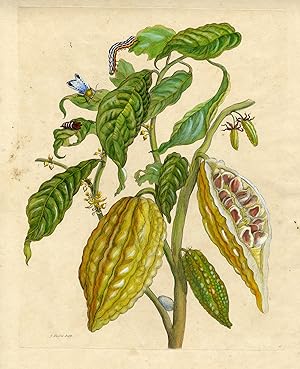
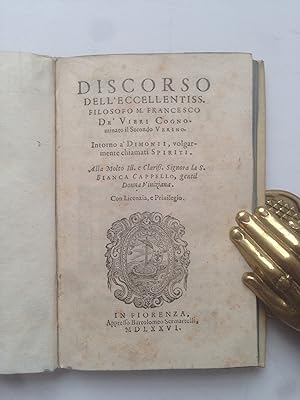
![Image du vendeur pour Militiae Equitis Aurati [I]n Artem Brevem Raymundi Lullii, Commentaria mis en vente par Sokol Books Ltd. ABA ILAB](https://pictures.abebooks.com/inventory/md/md30724563511.jpg)
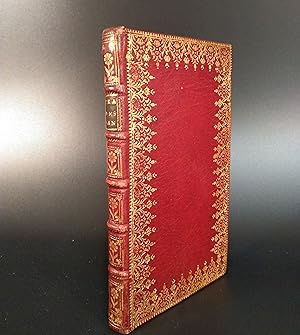
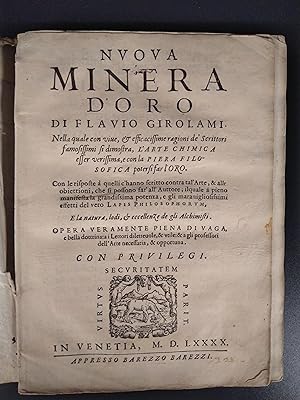
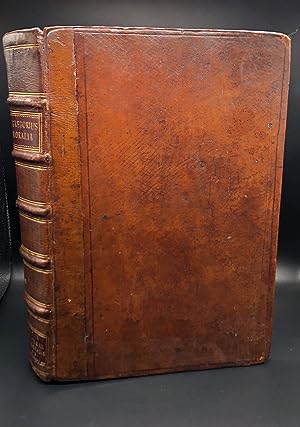
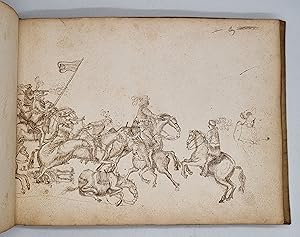
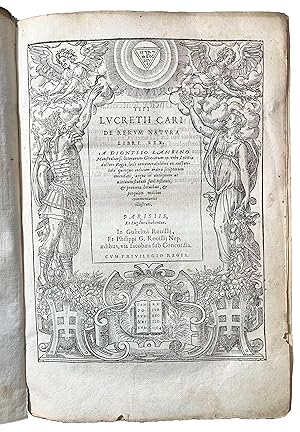
![Image du vendeur pour The Theory of Moral Sentiments; [uniformly bound with:] An Inquiry into the Nature and Causes of the Wealth of Nations. mis en vente par Peter Harrington. ABA/ ILAB.](https://pictures.abebooks.com/inventory/md/md31456610106.jpg)
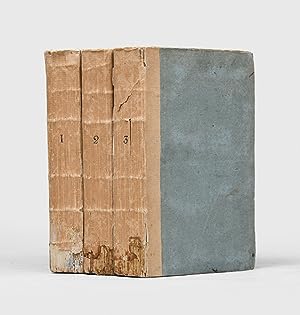
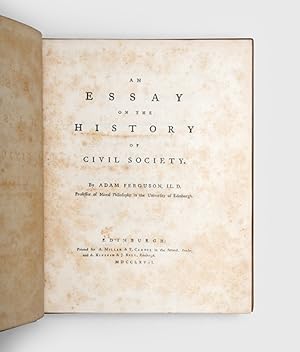

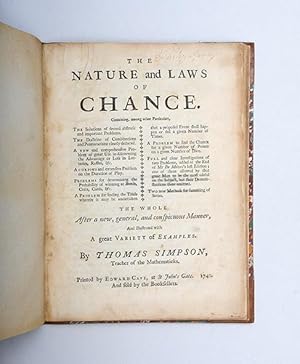

![Image du vendeur pour Code de la Nature ou le véritable esprit de ses loix, De tout tems négligéou méconnu. - [A FORERUNNER OF MARX & ENGELS] mis en vente par Lynge & Søn ILAB-ABF](https://pictures.abebooks.com/inventory/md/md14347140953.jpg)


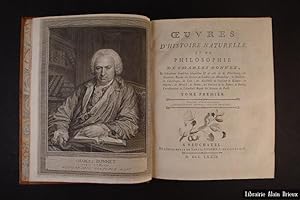
![Image du vendeur pour L'arbre de la science. [Suivi des Recherches sur les bruits du souffle dans les maladies du coeur] mis en vente par Librairie Alain Brieux](https://pictures.abebooks.com/inventory/md/md30774327885.jpg)
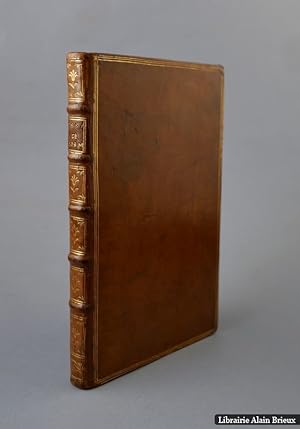
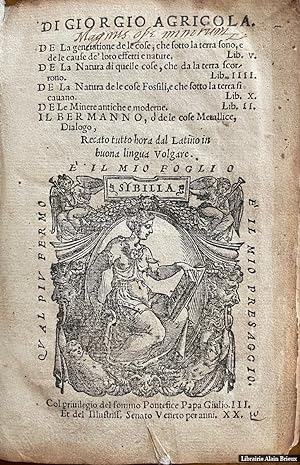
![Image du vendeur pour OEuvres diverses de M. de Fontenelle [ ] Nouvelle édition, augmentée & enrichie de figures gravées par Bernard Picart le Romain. mis en vente par Librairie de l'Univers](https://pictures.abebooks.com/inventory/md/md30795506759.jpg)
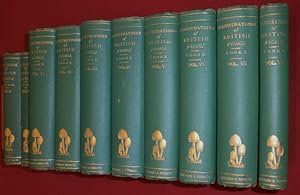
![Image du vendeur pour Recueil de lions, dessinez d'après nature par divers maitres & gravez, . Divisé en six livres chacun de six feuilles.Amsterdam, Bernard Picart [title-print also: Paris, François Chereau], 1729 (engraved 1728-1729). Oblong 4to (18.5 x 24 cm). With a letterpress title-page in red and black with Picart's engraved "device, 1 title-print and 42 lion prints in 6 series, on 37 leaves, all engraved by Bernard Picart after drawings made by himself (8, all from life), Rembrandt (18), Charles le Brun (6), Albrecht Dürer (1), Paulus Potter (1) and unattributed (8). Late 19th-century pimpled red cloth with the spine at the head of the pages. Rebacked in red cloth. mis en vente par ASHER Rare Books](https://pictures.abebooks.com/inventory/md/md22871209587.jpg)
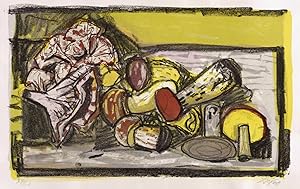
![Image du vendeur pour Kunstbüchlein. Wie man auff Marmelstein, Kupffer, Messing, Zihn, Stahl, Eisen, Harnisch und Waffen, &c. etzen, und künstlich vergülden soll. Mit vorgehendem Bericht, wie man Dinten, Dintenpulver, Prisilgen, und alle Metallfarben zum schreiben. Mancherley Farben, Pergament, Federn zu färben. Alle Metallen aus der Federn zu schreiben, Gold und Silber, Fundamentlein und Goldwasser auff allerley Ballerey, und dergleichen mehr, machen und temperieren soll. Zu Dienst und Ehren allen Schreibern, auch den unerfahrnen der Etzkunst, zusammen gebracht. . Von neuen übersehen, gemehret, und corrigirt, und in Druck gebracht.[Leipzig?], 1660. Small 8vo (14.5 x 8.5 cm). Title-page printed in red and black. Later marbled wrappers. mis en vente par ASHER Rare Books](https://pictures.abebooks.com/inventory/md/md22445126930.jpg)
